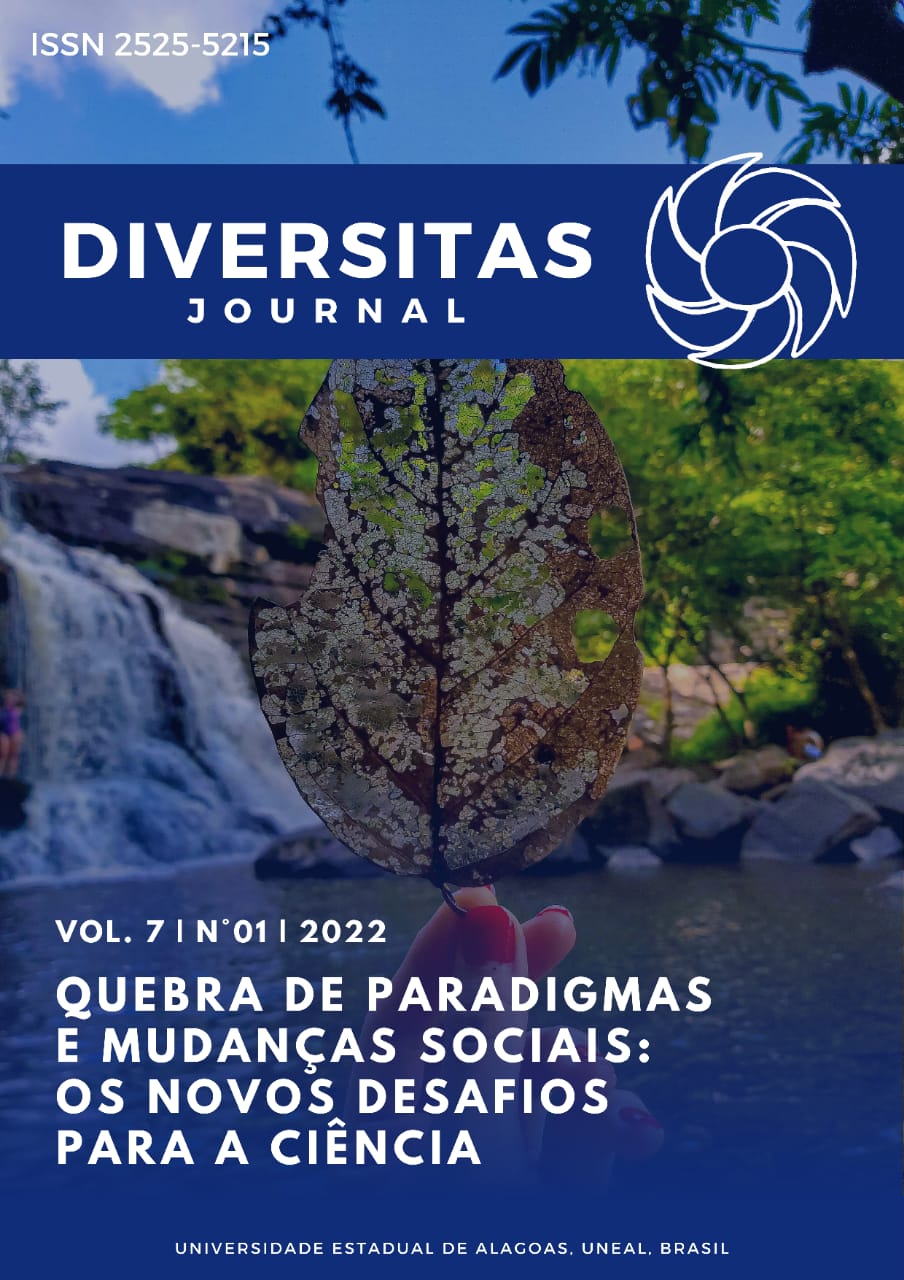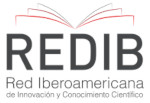Caixa entomológica como recurso didático para aulas sobre a classe insecta
DOI:
https://doi.org/10.48017/dj.v7i1.1848Keywords:
Ensino, Insetos, Artrópodes, Coleção entomológicaAbstract
In entomological boxes or collections, are stored, sorted and preserved, specimens or insect specimen structures for research and studies. This actual research aimed to promote knowledge about insect morphology, on 7th grade middle school students from Ruth Bezerra Public School located in Macapá City, in the State of Amapá. Initially a questionnaire was applied to obtain students' prior knowledge about the external morphology and Class Insecta species. After the questionnaire, students produced drawings to demonstrate their knowledge about insects' body structures. Subsequent to the drawings, theoretical and practical classes were given using an entomological collection provided by Arthropod Laboratory from Universidade Federal do Amapá. At the end of the classes, the students again produced the demonstrative drawings of the insects' body structures, so that knowledge could be obtained during activities. At the end of the activities, the questionnaire was again applied to compare pre-intervention and post-intervention knowledge. The results demonstrate that, when asked pre-intervention if arachnids are insects, 62,5% (N=15) of the students said yes. After the activities execution, 83,3 % (N=20) of the students were able to see the difference between the insects and the arachnids. Students also mentioned having a desire for other practical classes to obtain knowledge in the classroom. It can be inferred that the practical class using the entomological box obtained considerable acceptance by the students, and contributed significantly to the construction of knowledge about insects' external morphology.
References
ANDRADE, M. L. F.; MASSABNI, V. G. O desenvolvimento de atividades práticas na escola: um desafio para os professores de ciências. Ciência & Educação (Bauru), v. 17, n. 4, p. 835-854, 2011.
BACCIN, K. M. S.; FILHO, W. S. A.; SILVA, S. A. Os Insetos e a Ciência na Escola: Estratégias de Ensino. SCIENTIA CUM INDUSTRIA, v. 8, n. 3, p. 13 - 16, 2020.
BORGES, M. R. M.; LIMA, V. M. R. Tendências contemporâneas do ensino de Biologia no Brasil. Revista Electrónica de Enseñanza de las Ciencias, v. 6. n.1, 2007.
BRASIL. Resolução 466 de 12 de novembro de 2012. Diário Oficial da União nº12, Brasília, DF, 13 de junho de 2013 Seções I, p.59.
CASTRO, I. F.; BRAVO, F. Morfologia externa do gafanhoto adulto Eutropidacris sp: comentários sobre o plano básico de insecta. 1 ed. Imprensa universitária, 2001.
CHEN, G.; WANG, Z. W.; QIN, Y.; SUN, W. B. Seed dispersal by hornets: An unusual insect‐plant mutualism. Journal of Integrative Plant Biology, v. 59, n. 11, p. 792-796, 2017.
CUNHA, D. A. S.; NÓBREGA, M. A. S.; JUNIOR, W. F. A. Insetos Polinizadores em Sistemas Agrícolas. Ensaios em Ciências: Ciências Biológicas, Agrárias e da Saúde, v. 18, n. 4, p. 185-194, 2014.
EILENBERG, J.; VLAK, J. M.; LEROUX, C. N.; CAPPELLOZZA, S.; JENSEN, A. B. Diseases in insects produced for food and feed. Journal of Insects as Food and Feed, v. 1, n. 2, p. 87-102, 2015.
FAVACHO, D. G. A.; ANDRADE, J. J. Mais que especial: por um ensino de ciências inclusivo e transformador. Ribeirão Preto: Edição dos Autores, 2020.
FILHO, W. S. A. Coleção entomológica didática. In. MACHADO, C. P. (org). Ensino de ciências [recurso eletrônico]: práticas e exercícios para a sala de aula. 2. ed. Caxias do Sul: Educs, 2017. p. 97-103.
FONSECA, J. J. S. Metodologia da pesquisa científica. Fortaleza: UEC, 2002. GALLO. D.; OCTAVIO; N; SINVAL; N. S; RICARDO. C. L. P.; Manual de entomologia agrícola. ed. São Paulo: Agronomia Ceres, 2002.
GIL, A. C. Como elaborar projetos de pesquisa. ed.4. São Paulo: Atlas, 2008. GULLAN, P. J.; CRANSTON. P.S. Os insetos: um resumo de entomologia. 3a ed. São Paulo: Rocca, 2008.
GOLUBKINA, N.; SHESHNITSAN, S.; KAPITALCHUK, M. Ecological Importance of Insects in Selenium Biogenic Cycling. International Journal of Ecology, v. 2014, n. 3, p. 1-6, 2014.
JANKIELSOHN, A. The importance of insects in agricultural ecosystems. Advances in Entomology, v. 6, n. 2, p. 62-73, 2018.
LEAL, D.; OLIVEIRA, E. P; SILVA, J.K.; BOSSO, M. K. Produção E Divulgação De Material Didático pedagógico Sobre Os Insetos No Ensino Fundamental. Diálogos & Saberes, Mandaguari. v.7, n.1, p. 99-107, 2011.
LEITE, A. C. S.; SILVA, P. A. B.; VAZ, A. C. R. A importância das aulas práticas para alunos jovens e adultos: uma abordagem investigativa sobre as percepções dos alunos do PROEF II. Ensaio – Pesquisa em Educação em Ciências, Belo Horizonte, v.7, n.3, p. 1-16, 2005.
LIMA, G. S. N.; CAJAIBA, R. L.; SOUSA, E. S. Percepção e classificação de insetos por moradores da Comunidade Vila Pindaré, Buriticupu, Maranhão - estudo de caso. Enciclopédia Biosfera, v. 17, n. 32, p. 1-11, 2020.
MOTTA, P. C. Aracnídeos do cerrado. 1ª edição, Tecnical Books Editora, Rio de Janeiro, 2014.
MUNHOZ, E. M. B.; SILVEIRA, M. S.; LIMA, J. S. Confecção de caixa entomológica como estratégia de mediação do conhecimento científico no ensino fundamental. In: XII Congresso Nacional de Educação – EDUCERE. Paraná: 2015. Disponível em: https://educere.bruc.com.br/arquivo/pdf2015/22097_10720.pdf. Acesso em: 5 de mar. 2021.
PARRA, J. R. P. Biological Control in Brazil: An overview. Scientia Agricola, v. 71, n. 5, p. 345-355, 2014.
RIBEIRO, N. C. G.; SANT’ANA, D. M. G. The entomological exhibition of a Science museum and its contributions to non-formal Education. Acta Scientiarum, v. 41, n. 1, p. 1-7, 2019.
SANTOS, D. C. J.; SOUTO, L. S. Coleção entomológica como ferramenta facilitadora para a aprendizagem de Ciências no ensino fundamental. Scientia Plena, v. 7, n. 5, p. 1-8, 2011.
SANTOS. J. C. D.; SOUTO. S. L. Coleção entomológica como ferramenta facilitadora para a aprendizagem em ciências no ensino fundamental. Revista Scientia Plena, v.7. n.5, p. 1-8, 2011.
SILVA, A. P. M.; SILVA, M. F. S.; ROCHA, F. M. R.; ANDRADE, I. M. Aulas práticas como estratégia para o conhecimento em Botânica no ensino fundamental. HOLOS, v. 8, n. p. 68-79, 2015.
SOUSA, DE. G. R.; OLIVEIRA, DE. G. G.; TOSCHI, S. M; CUNHA, DA. F. H. Meio ambiente e insetos na visão de educandos de 6º e 8º ano de escolas públicas em Anápolis- GO. Ambiente e Educação, v.18, n.2, p. 59-81, 2013.
SOUZA-JUNIOR, E. A.; COSTA-NETO, E.M.; SANTOS, G. C. B. As concepções que estudantes da sexta série do ensino fundamental do centro de educação básica da universidade estadual de feira de Santana possuem sobre os insetos. Gaia Scientia, v.8, n.1, p. 8- 16, 2014.
TAKEDA, S. New field of insect science: Research on the use of insect properties. Entomological Science, v. 16, p. 125-135, 2013.
TRINDADE, O. S. N.; SILVA-JUNIOR, J. C., TEIXEIRA, P. M. M. Um estudado das representações sociais de estudantes do ensino médio sobre os insetos. Revista Ensaio, Belo Horizonte, v.14, n.3, p. 37- 50, 2012.
ZHU, F.; LAVINE, L.; O’NEAL, S.; LAVINE, M.; FOSS, C.; WALSH, D. Insecticide Resistance and Management Strategies in Urban Ecosystems. Insects, v. 7, n. 2, p. 1-26, 2016.
Additional Files
Published
How to Cite
Issue
Section
License
Copyright (c) 2021 CARVALHO, A. L., Yuri Nascimento, SÁ, D. M. C.

This work is licensed under a Creative Commons Attribution 4.0 International License.
The Diversitas Journal expresses that the articles are the sole responsibility of the Authors, who are familiar with Brazilian and international legislation.
Articles are peer-reviewed and care should be taken to warn of the possible incidence of plagiarism. However, plagiarism is an indisputable action by the authors.
The violation of copyright is a crime, provided for in article 184 of the Brazilian Penal Code: “Art. 184 Violating copyright and related rights: Penalty - detention, from 3 (three) months to 1 (one) year, or fine. § 1 If the violation consists of total or partial reproduction, for the purpose of direct or indirect profit, by any means or process, of intellectual work, interpretation, performance or phonogram, without the express authorization of the author, the performer, the producer , as the case may be, or whoever represents them: Penalty - imprisonment, from 2 (two) to 4 (four) years, and a fine. ”


















